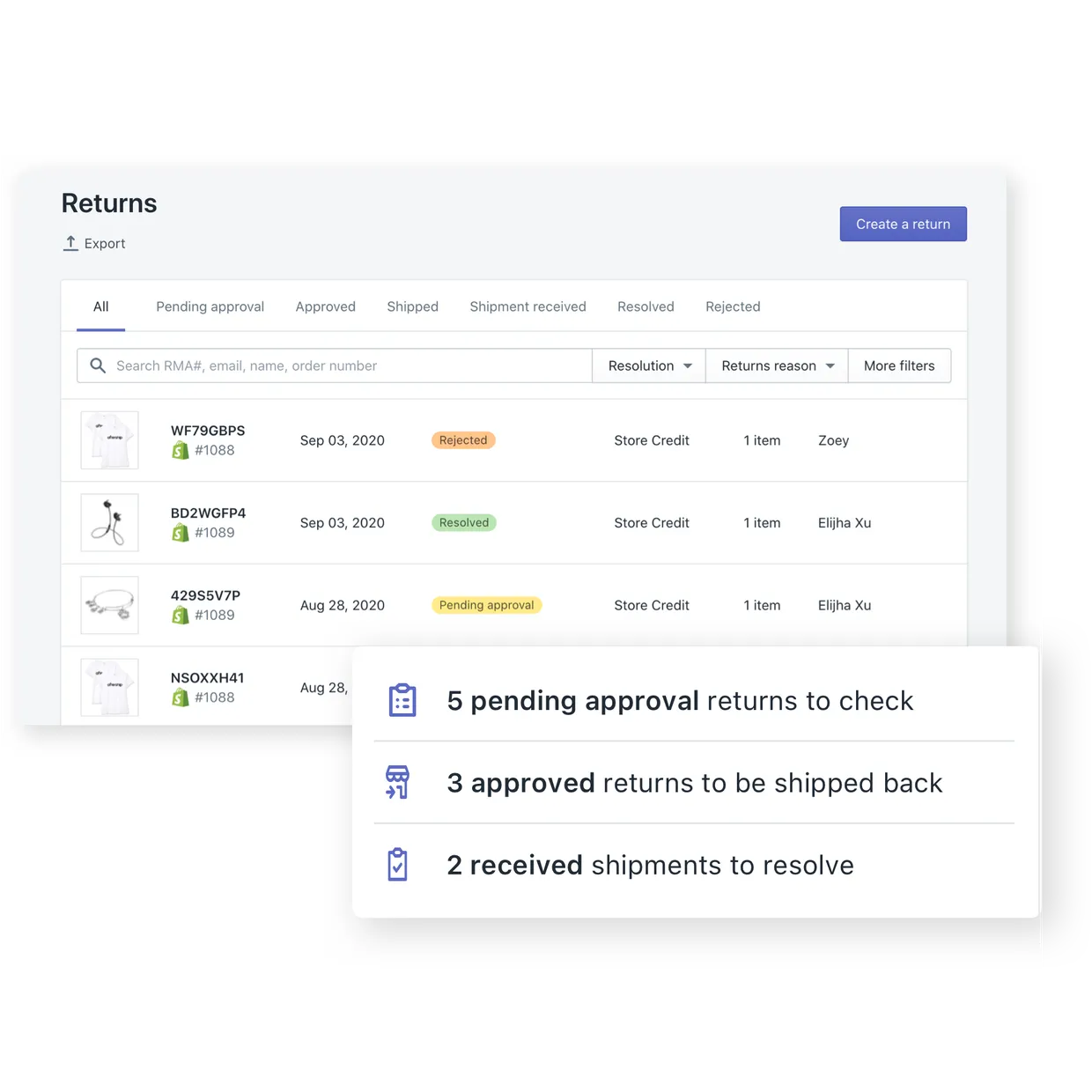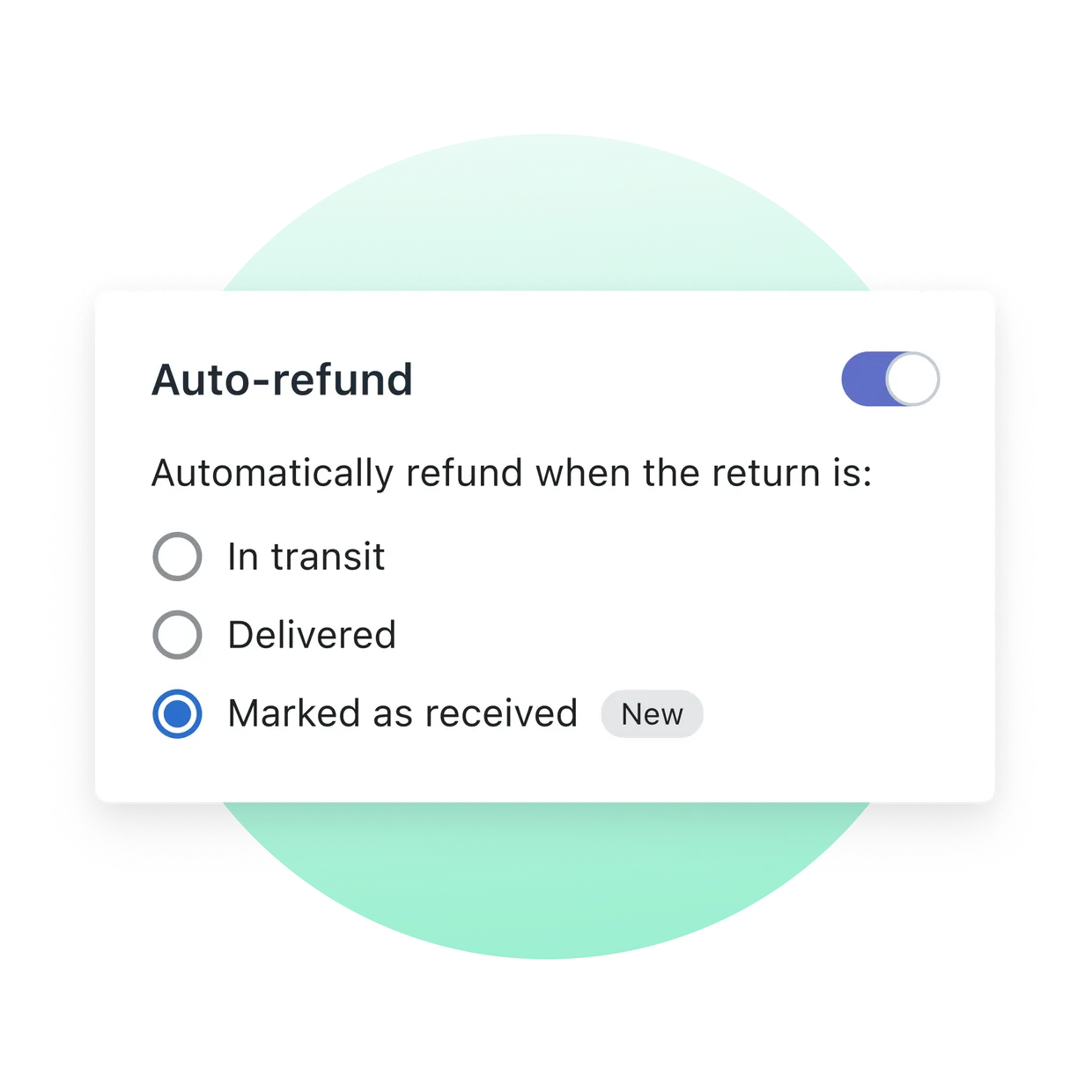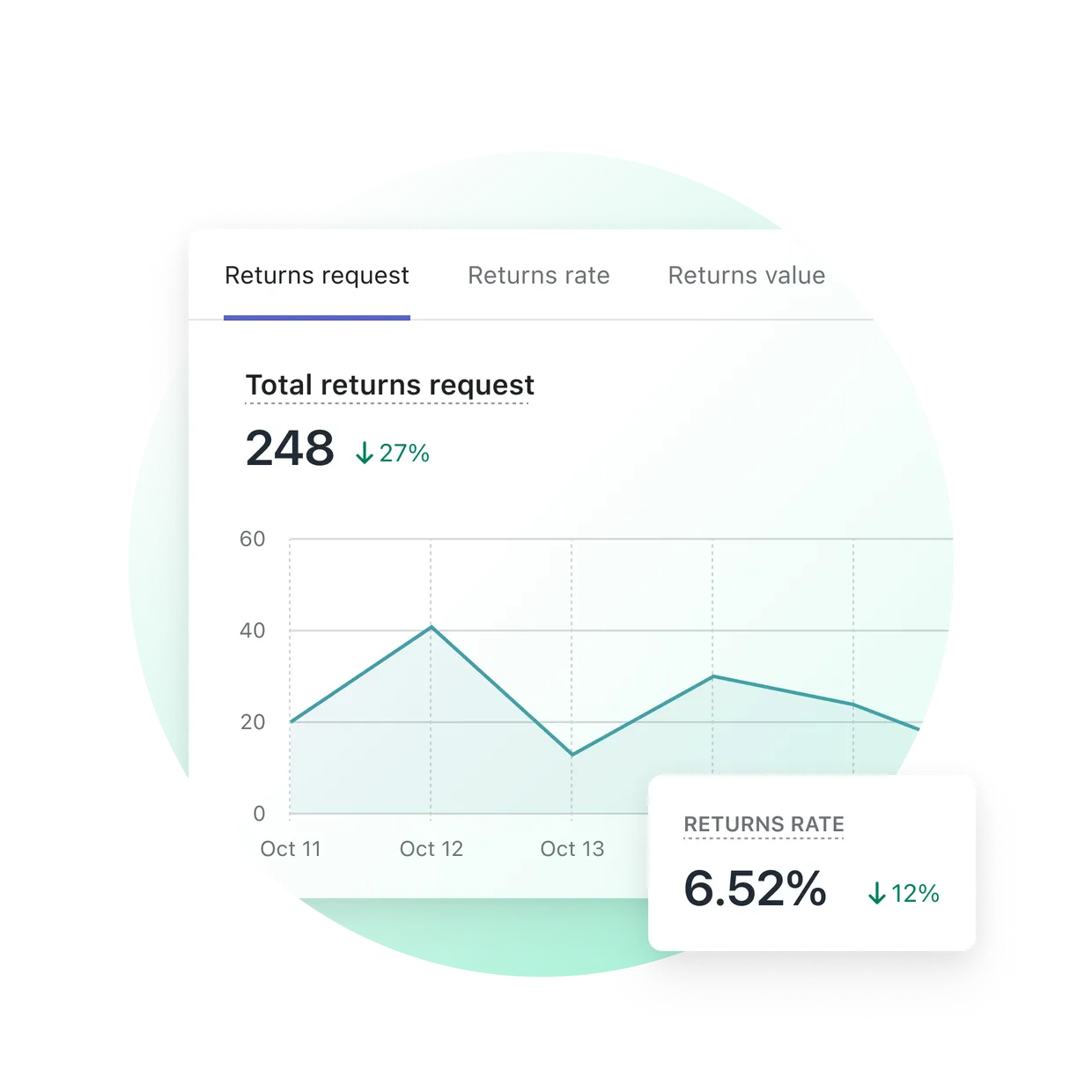Guide to Returns Management Software in 2024
This blog will assist you in selecting the returns management software to reduce costs for your ecommerce shop. Let's explore the world of returns solutions.

Are you experiencing difficulties with the current return process, which is resulting in a loss of profits with each exchange? We understand your concerns. To assist you in navigating the ecommerce software landscape and identifying the optimal returns management solution for your business, we have prepared this comprehensive guide.
Let us explore how the appropriate software can not only maintain customer satisfaction but also ensure the financial stability of your business. We are confident that by the end of this article, you will be convinced of the value of this software.
What are ecommerce returns?
Ecommerce return is defined as a customer returning a product or item purchased from an online store. This process begins when the customer initiates a return request through the online store’s platform. The customer then packages and sends the item back to the seller. Once the item is received, the seller will determine whether to issue a refund or exchange.
While returns are an inherent aspect of ecommerce, they present many considerations. High returns can have a detrimental impact on businesses, increasing the cost of processing, shipping, and restocking returned items. Returns tickets also create operational challenges for merchants due to the necessity of robust logistics and customer service infrastructure to manage returns. Returned items also necessitate additional transportation and potential waste, which is detrimental to the environment.
Although returns may appear to be a cost and inconvenience for businesses, they can also be a sales driver. A well-designed return process enhances the brand image and can lead to positive reviews and increased sales.
How does the return management process work?
1. Create and communicate the returns policy
First you need to create a clear and concise returns policy. This policy should state the conditions for returns, the time frame for returns and what the customer needs to do. It should be communicated to the customer at point of sale and easily found on your website.
2. Customer initiates the return
When a customer wants to return a product they initiate the process by following the instructions in the returns policy. This may be filling in a return request form online or contacting customer service. The customer will usually give a reason for the return which can help you get feedback.
3. Approval and reverse logistics
Review the return request to see if it meets the conditions in the returns policy. If approved the company will send the product back. This is called reverse logistics. Create a return shipping label and coordinate with logistics providers to get the product back.
4. Receive and return merchandize
When the returned product reaches the agreed point of return say a warehouse or a fulfillment center, it is checked to determine why it was returned. The inspection then looks for such aspects as whether there is any damage to the garment or whether it is the wrong size. According to the inspection, the firm determine if the customer is fit for refunding, replacement, or store credit.
5. Further processing
Further processing of the return is done as per the company’s policy after they get back the return from the point of inspection. Any refunds that are due are processed and issued immediately. If the customer had demanded for replacement, the product was shipped out to replace it. If the returned item is not found to be damaged or is not able to be resold, it may be placed back into stock to be sold again. This step also involves updating inventory records to reflect the return.
6. Returns data recording and analysis
Recording returns data is a necessity when it comes to determining why returns are made and the frequency at which they are made. It can help to identify potential problems regarding the quality of products or lack of customer satisfaction, as well as assess the issues with returns.
What are the difficulties in returns management and the ways to settle up?
| Difficulties | Ways |
|---|---|
| Lack of efficient return policies | ecommerce businesses need to ensure that their order management systems, inventory tracking systems, and customer support platforms are seamlessly connected to facilitate efficient returns processing. |
| Customers increasingly expect a hassle-free and transparent returns process | Clear communication of return policies and providing multiple return options are essential to improve the customer experience. |
| Fraudulent returns | Customer verification: Ensure that the customer’s identity matches the purchase records. This can involve checking IDs for in-store returns or verifying account details for online returns. |
| Inventory management | An effective inventory management system that integrates with the returns process is crucial to streamline operations and reduce errors. |
| Labor-intensive and time-consuming | Addressing these challenges requires a combination of clear policies, efficient logistics, cost management strategies, and the adoption of advanced technologies to streamline the returns process and enhance customer satisfaction. |
What is returns management software?
Returns management software is a technical solution designed to automate and streamline the entire returns process for e-commerce businesses. It serves as a central hub, integrating various aspects to enhance efficiency, reduce costs, and improve customer satisfaction.
The software covers the entire returns process, from the customer requesting a return, selecting a return method, stocking, tracking, to refunding. Automated help is provided for merchants at each stage.
The objective of returns management software is to transform the returns process, which can be a potentially negative experience for businesses and customers alike, into a positive one.
How can effective returns management systems help your return management?
Self-service return
Normally, handling a return request implies cooperation of the members of the customer service team and constant contact with the client. The time that is taken in this process is however long and energy consuming and does not in any way help create better end-user experience.
However, with returns management software, all the processes described above are accomplished with a self-service customer portal.
Customized returns policies & rules
From the perspective of a merchant, accelerating the product returns process also means optimizing the management of returned products.
Returns management software enables the formulation of sophisticated and conditional routing rules and the setting of a variety of return reasons. Merchants can then view the status of all returns and perform various operations in one centrally managed space.
Reliable reporting & Data insights
To minimize returns as much as possible, it is essential to understand the reasons for returns and consumer psychology. In addition to providing a unified management dashboard, returns management software collects returns data and presents various returns reports.
It not only assists in enhancing return workflows and inventory planning, but also facilitates the identification of product issues and key gaps in the return process. These insights provide merchants with the information they need to reconsider their strategies for reducing returns and driving the bottom line for their business.
Reduce costs
Returns management software can reduce merchants’ costs through the following five aspects:
- Reduce manpower investment in processing returns requirements;
- Automation greatly reduces manual errors during returns processing and reduces losses;
- Accelerate the product return process, allowing products to return to circulation faster and reduce consumption;
- Reduce lost sales by converting returns into upsells or exchanges;
Save on returns processing and shipping costs by analyzing your data to determine the best way to manage returns.
Improve customer experience
Customers prefer automated self-service over manual communication for several reasons. It is a more efficient method of customer service and it also gives the customers a greater sense of control. This is in contrast to traditional customer service methods such as phone calls, emails, or chats, which can be time-consuming and uncertain.
Furthermore, you can encourage customers to exchange items instead of requesting refunds, or offer refunds in the form of store credit instead of cash. This can provide customers with a reason to return to your store and continue their relationship with your brand, which in turn increases customer lifetime value.
Features of returns management software
Returns management software offers a range of key features that make the returns process more effective. To ensure optimal performance, the software needs to include several basic features.
Returns management portal

An effective returns management software must include an admin portal or a dashboard that streamlines the management of returns. This feature should allow you to coordinate store credit, refunds, or product exchanges, all in one place.
Returns rules

To simplify the complex return processes, the returns management software should allow setting different and conditional returns rules, including editing returns reason, RMA (Return Merchandise Authorization), and exchange rules.
Branded returns page

A clear display space offered by the software is necessary to ensure your customers feel confident and loyal to your brand. This will help eliminate any confusion customers may have when initiating the return process. The software should be designed with an easy-to-use interface that's intuitive for any shopper who visits the portal. This way, customers will be able to navigate the website and make a return without requiring any guidance.
Returns notifications

Customers love transparency. You should use the returns management software to give customers a sense of security with on-time return status updates. It’s a crucial way to reduce inquiries and manpower investment in customer support. Proactive updates of returns status usually include the following types:
- Pending approval
- Return Request Approved
- Return Request Rejected
- Return reminder
- Items returned
- Shipment Received
- Request Resolved
Returns analytics

Returns management software provides a variety of features, including returns analytics. This feature includes an analytics dashboard and various types of reports such as returns reasons, return resolutions, upsell revenue, return requests and rates. This data can be used to improve your product offerings and inventory planning. It's an indispensable feature if you want to gain actionable insights.
Additional features
To provide more efficient services, various returns management software on the market have developed different additional or special features for merchants to choose from based on their own needs. Here are some competitive ones:
- Fraud Detection
- Parent/Child Org Control & RBAC (Role Based Access Control)
- In-house item grading/at-home pickup
- Additional labels for large & heavy items
- Remove Solution Provider Branding/White-labelling
How to choose a return management software? with top recommendation list
To choose an excellent returns management software for your business, you may consider following these steps:
Step 1: Check its integrations and compatibility to make sure it integrates with your current systems (major ecommerce platforms, carrier integration:, tech partners & solutions, returns API & API documentation).
Step 2: Select a solution that offers easy customization in advanced returns rules(returns reason, routing rules, country-specific rules, etc).
Step 3: Choose a software that provide a easy-to-operate editor to customize the look and feel of the merchant's brand images.
Step 4: Prioritize software that value security and privacy.
Step 5: Analyze the software's cost and pricing structure, and determine whether the features and benefits align with the pricing plans offered.
AfterShip Returns

AfterShip Returns is a software designed for managing returns in ecommerce. The software uses automation to help retailers optimize return costs, retain more revenue, and offer a better returns and exchange experience to their customers.
AfterShip Returns has an extensive carrier network of more than 39 carriers and supports auto-label generation without the need for additional connectors or apps. This wide carrier network also supports over 310,000 return drop-off locations worldwide.
Some of the best ecommerce return solutions provided by AfterShip:
- Seamlessly connecting to AfterShip Tracking simplifies the process of sending tracking information for exchanges and new orders.
- Easy to export data and reports with a customizable analytics dashboard.
- Robust inventory hold and charge process to protect merchants and retailers.
- Limits return types to address fraud, and auto-detects potential fraud.
- Supports Green Returns.
Selecting the right platform is essential for the success of your ecommerce business. If you're interested in more comparison of different return management platforms, you can check our page----'Best Returns Management Software in 2024'
Conclusion
If you require further information on returns management or if your business is facing particular returns challenges, we are at your disposal to provide assistance. Contact our specialist today for further information!



Comments ()